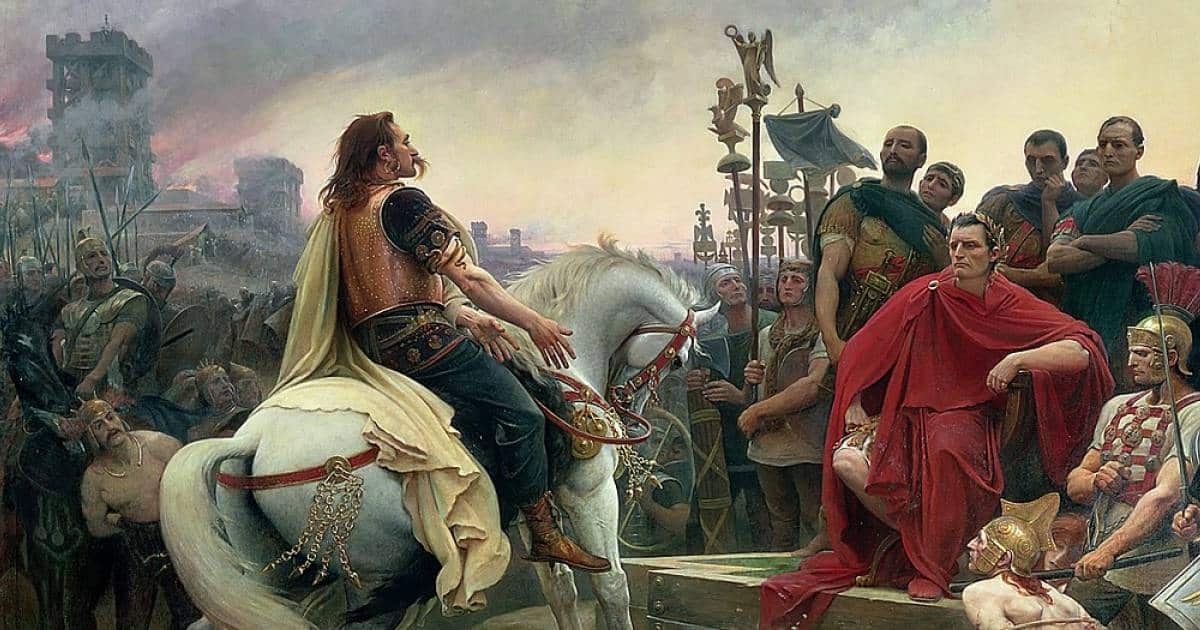Widely regarded as one of the greatest military commanders in history, Julius Caesar enjoyed perhaps his finest moment at the Siege of Alesia in September 52 BC. Not only was he significantly outnumbered, he ultimately had to fight two armies at once. A less able commander would have panicked after being surrounded, but Caesar was no ordinary leader. He completely outfoxed his enemies and eventually forced their surrender.
The Gallic Wars began in 58 BC and involved Caesar waging war against a collection of Gallic tribes. It appeared as if Caesar was about to put the finishing touches to the campaign by 52 BC but the rebellious Gauls found a new leader named Vercingetorix after he overthrew dissenting tribal chiefs. He was able to unite several tribes against the Romans including the Senones, Parisii, Pictones, Turones, Aulerci, and his own Arverni tribe.
However, Caesar wasn’t backing down and seized the important town of Avaricum where 40,000 inhabitants were killed. Although Vercingetorix’s army greatly outnumbered the Romans, he wisely avoided open combat and preferred guerrilla tactics. However, Caesar would eventually force the Gallic tribes to fight a pitched battle.

The Battle of Gergovia
The Gallic tribes called a general council at Bibracte and declared Vercingetorix as the supreme commander of the allied Gallic forces. He demanded 15,000 cavalries which he planned to use to destroy the grain and hay supplies of the Romans. Vercingetorix also ordered his allies to burn their corn as part of his scorched earth policy. The next aim was to attack the Roman province in the knowledge that if the region fell, the Roman commander was marooned.
Lucius Caesar was in charge of defending the province, and he had 22 cohorts at his disposal. Vercingetorix began to shadow Julius Caesar’s movements as the Roman commander was marching across the margins of Lingones territory. Caesar was attempting to get to the province to prevent any major attack. However, Vercingetorix was within nine miles of Caesar’s camp and called a staff conference.

The Gallic leader thought that Caesar was looking to concede the campaign by retreating for safety. He believed the Romans would return with an even bigger force, so Vercingetorix called on his army to attack as soon as possible. The plan was to use cavalry to swoop down on the supply train and either slow the legionnaires down or force them to abandon their supplies.
Alas, Vercingetorix’s plan backfired at the Battle of Gergovia when his initial cavalry charge failed. Caesar probably expected the Gauls to follow up with infantry but in reality, the Gallic infantry was too far from the action to have an impact. Caesar quickly realized the enemy’s mistake and forced its cavalry to retreat. However, he refused to commit his infantry and Vercingetorix was able to retreat to Alesia, the capital of the Mandubii. The attack at Gergovia was poorly planned and executed, but worse was to come for Vercingetorix as he was totally outmaneuvered by Caesar in the next conflict.

